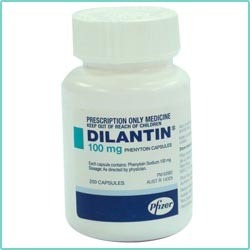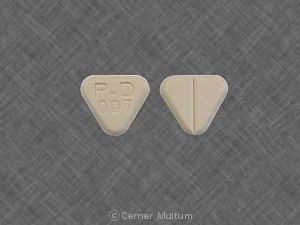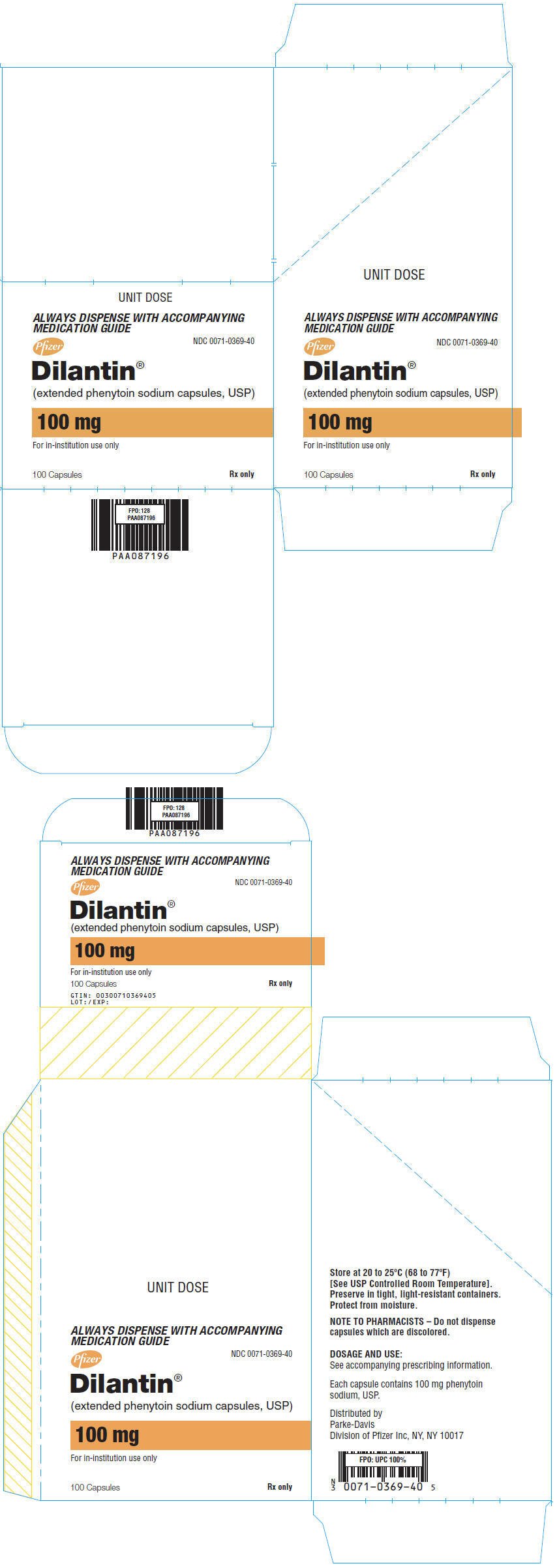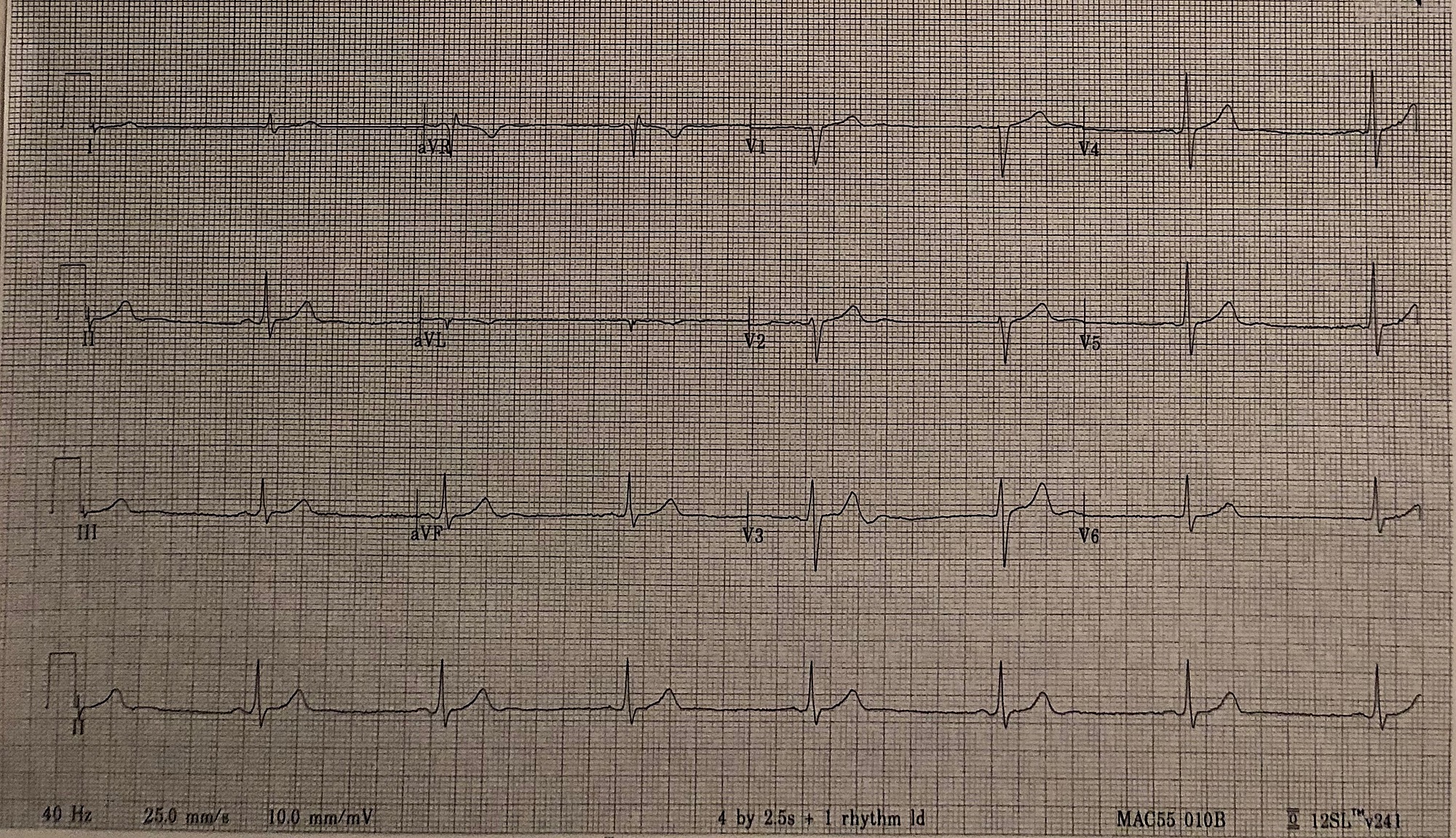 How to Remember Side Effects of Phenytoin in 2 Minutes?? - YouTube
How to Remember Side Effects of Phenytoin in 2 Minutes?? - YouTubeepilepsy.com Search form Main menu PhenytoinPhenytoin (FEN-ih-toe-in) is the generic name (not brand name) of a widely used seizure medication. Common brand names for this type of medicine include Dilantin, Phenytek and Epanutin (in the UK), but also sold using the name of phenitoin or sodium phenitoin. Using generic medicines instead of brand names is often suggested as a way to save money. Sometimes savings are large, but with other medicines the price differences are quite small. Investigate and buy around before deciding whether savings are worth any possible problems. People who change the Dilantin brand to generic phenytoin may run the risk of having more seizures or side effects during change, because the body does not absorb the different types in the same way. Changing generic phenitoin from one company to another may have similar risks. So you can switch from generic phenytoin to Dilantin. All these risks are not fully known. For some people the effects of changing one type to another are very small. Some use generic phenitoin successfully using the product of the same company. Then the dose can be adjusted to achieve the best results. The important thing is that you and the doctor should know what you are getting from the pharmacy and be able to control what type of seizure medication you get. 30 mg (clear) Capsules with a 100 mg pink band (clear) Kapseal -- Original to be interrupted Capsules with an orange band of 100 mg New look - to replace Kapseal Orange and white medium capsulesDilantina Chewable Infatabs 50-mg (yellow, triangular, marked) Those who have trouble swallowing capsules (especially young children) can use tablets instead. They are flavored and chewable, but they can also swallow whole. Suspension Dilantin-125 125 mg per 5 ml (orange) The liquid has an orange-vainilla flavor. It is given in doses of 5 milliliters (mL), which is almost equal to a teaspoon. 200 mg This capsule has a dark blue lid and a blue body, printed with "Bertek" (the name of the company that makes Phenytek) and "670".300 mg Both halves of this capsule are the same shade of blue. They're printed with "Bertek" and "750." The 300 mg capsule is the most used. Each capsule actually contains white tablets (two in the capsule of 200 mg and three in the capsule of 300 mg). Do not take these tablets separately. Used to treat Forms The same medication is available in several ways because people's needs vary. The name or appearance may differ from country to country, or even from manufacturer to manufacturer, but generally the dose (measured in milligrams, abbreviated "mg") will be the same. In the United States, several companies sell generic phenitoin, in these ways: Two types of generic phenitoin capsules are available in the United States: "extended" capsules are similar to the Dilantin Kapseals brand. This medication is absorbed more slowly than the medication in the "prompt" capsules. Most people use extended capsules. Liquid products from different companies contain the same type of medicine, but check with the pharmacist or your doctor if you get pills that look different from those you have been taking. You need to be careful because pills from a different company may not work the same way in your body. Follow the doctor's instructions. Call if you have any questions. Ask your doctor what to do if you forget a dose. The way the medication is taken depends, of course, on the way the doctor prescribed it. Get every capsule. Don't bite him or break him. The capsules should be stored at a temperature below 86°F (30°C). Protect them from light and moisture—do not keep them in a wet bath, for example. To use the liquid suspension, shake the bottle thoroughly just before measuring. Use the same standard or drip tablet every time to get an exact dose. Do not mix liquid phenitoin with any other liquid. Store the bottle at room temperature, between 68o and 77oF (20°-25°C). Protect it from light and freezing. It's okay to take any form of phenitoin either with food or without food, but it's a constant day and day. A person who normally takes it with meals should do it all the time. Do not use more than prescribed by your doctor. If one or two additional capsules are taken, call your doctor to advise you. For larger overdose, call your local poison control center or emergency room immediately unless you have other specific addresses from your doctor. Do not stop using phenitoin or change the amount taken without talking to your doctor first. Stop any seizure medication once may affect other medications in the body. It can even cause unparalleled seizures that can be life-threatening. A missed dose should be taken immediately. If it's almost time for the next dose, just use a dose, not a double dose, and call the doctor's office for more advice. Do your best to follow your doctor's instructions. If you forget the doses often, it may be a good idea to get a special pill or see with an alarm to remind you. You may also want to ask your doctor if you can use Phenytek, a type of phenitoin that is taken only once a day. Taking the amount of convulsive drugs prescribed by the doctor and taking it at the right time every day are the most important steps to prevent seizures! Brain cells need to work (fire) at a certain rate to work normally. During a seizure, brain cells are forced to work much faster than normal. Phenitoin helps prevent brain cells from working as fast as a seizure requires them. Cells are avoided from all shots together in an uncontrolled wave, so seizures can be stopped when they are starting. There is usually little or no change in the normal functions of brain cells when standard amounts of phenitoin are taken. After the medicine is swallowed, it must be absorbed in the blood so that it can move through the body. The process of absorbing, digesting and excreting a medicine or food is called metabolism. The way the body metabolizes a particular medicine affects how many times it should be taken. It also determines whether you interact with other medicines or will be affected by conditions such as liver disease. Like many other medications, phenitoin decomposes (digested) in the liver. If the person also takes other medications that are digested in the liver, things can get complicated. How well each medication works and how fast the body leaves can be changed. That's why the doctor needs to know everything a person takes, not only prescription drugs but also things like vitamins, herbs, alcohol, and aspirin. These things can affect how much phenitoin is prescribed. Phenytoin is highly effective for seizures and is one of the most commonly used seizure drugs in North America. It is best used for partial asset seizures, which begin in a brain area. Its effectiveness in the control of seizures has been widely studied in careful scientific trials in many patients. Many studies have compared phenytoin to other medications for seizure, to see what medicine is best for people who have just started treatment for epilepsy. On average, the results were almost the same for phenytoin as for several other seizure drugs that are often used. Differences in side effects can be important to decide which medication is best for each person. Because some people do better with phenitoin and others do better with something else, it is difficult to foresee the results in any given person. If seizures continue, or if annoying side effects occur, the doctor will likely change the amount of prescribed phenitoin. If that doesn't work, the next step may be to prescribe a different seizure medication by itself or prescribe a combination of phenitoin and other seizure medication. Many are available. No combination is better for all Most people who take phenytoin do not have too much problem with side effects. That is one of the reasons why it is used so much. The most common complaints (usually not too severe) are: If these problems do not go away within several days, or are really upset, call your doctor. Most people overcome these side effects without a change in the amount of phenitoin they are taking. But if the side effects persist, it is usually a sign that the level of phenitoin in the body is too high. A change in the dose or type of phenytoin can help. No one should stop taking phenitoin or change the amount they take without the guidance of your doctor, however. People who have just started taking phenitoin (or just started taking a larger amount) should be careful during activities that might be dangerous, until they know if they have any side effects. Allergic reactions Approximately 1 in 10 people who take phenytoin have a red rash in the first weeks of taking it. If this happens, tell the doctor or nurse immediately, to be sure it's not the beginning of a serious problem. It's weird that the rash is serious, but don't ignore it. It is often necessary to change to a different seizure medication if a drug eruption occurs with phenytoin. Long-term side effects Some other side effects only appear after a person has been using phenitoin for several months or years. Usually, but not always, they are related to taking high doses. The most common ones affect appearance: The overcrowding of gums (hyperplasia of aging) is more common in children than in adults. It can be reduced by vigorous brushing, daily floppy and regular visits to the dentist, which can recommend additional treatments. If phenitoin stops, the gum problems will not get worse, and in some cases they will disappear within a few months. The long-term use of phenitoin has also been found to cause bone weakening. Bone disease is even more likely if a combination of medications for seizure is used. People who take phenytoin should exercise, take vitamin D supplements and eat calcium-rich foods. Some non-food sources of calcium, such as Tums and Os-Cal, reduce phenitoin absorption. They can be used but should not be taken within about 2 hours after taking phenitoin. Some people who take phenytoin for several years may have nerve damage on their legs. False reflections can be seen in a minority of this group. Damage to the part of the brain called cerebellum may affect others who take phenitoin for a long time, especially if they take high doses. Severe enough damage to produce significant problems is rare, however. Serious reactions to phenytoin are very rare but all who take this medication should at least be aware of them because a very small number of people have died because of them. A complete list of all reactions to phenytoin can be found in the package insert, but it is important to remember that most people taking phenytoin do not have any of these serious problems. As with many other drugs for seizure, there is a very small possibility of developing such a serious eruption that hospitalization may be necessary. (It has been estimated that this happens to 2 to 5 people of every 10,000 who take phenitoine.) Although the risk is small, call your doctor quickly if you notice an eruption, as in some cases these eruptions are fatal. In rare cases, allergic reactions to phenytoin may result in damage to the liver or bone marrow. The doctor may perform blood tests from time to time to look for early stages of this type of damage. Another rare reaction to phenitoin is lymph node disease. The doctor should be informed about fever, rash, and swollen lymph glands. These are usually found in the neck, armpits or groin. Phenytoin (such as other medications for seizure) should never be stopped without doctor's instructions. Abruptly stopped phenytoin can lead to nonstop seizures (called epilepticus status), a life-threatening condition. The levels of other medications in the body could also go up or down. Then your side effects can increase or be less effective. Your doctor may be able to prescribe a different medication if phenitoin is causing unpleasant side effects. On 10 July 2008, the Food and Drug Administration (FDA) convened a consultative panel to review the data previously collected by the FDA from drug studies showing an association between many of the anti-epileptic drugs (AEDs) and suicidal ideation and behaviour, which together are called suicide. According to the FDA Alert, among patients with epilepsy in these drug studies, 1 out of every 1000 people taking placebo (inactive substance) showed suicide compared to approximately 3.5 out of every 1000 people taking an AED. The FDA advisory panel voted to accept FDA data at its meeting on July 10. We again urge patients and families to contact your doctor before stopping an epilepsy medication because this could lead to seizures and worsening mood. Doctors often find that medicines are useful for purposes other than those approved by the Food and Drug Administration (FDA). It is legal to prescribe medications for these "uses outside the label". Phenytoin has two common uses out of the label: People with liver disease and those who should take certain other types of medications may need to be extracautious about taking phenitoin. That's why it's so important to make sure that the doctor knows about any liver disease and above all kinds of medicine that you're taking. Most of the time, phenitoin can be successfully taken if the patient works with the doctor to determine the right amount to be taken. Once a doctor suggests a new recipe, make sure to talk about what other medicines, supplements, herbs and vitamins are already being taken. Sometimes a type of medicine changes the way another type of medicine works in the body. If two types of medications are affected, the doctor may want to prescribe something else or change the amount to be taken. This is true not only for prescription drugs, but also for medicines that just picked up the shelf at the store. For example, aspirin (ASA) is usually safe to take with phenitoin in the usual doses, but if taken more than 1500 mg a day, the level of phenitoin in the blood will be increased. Interactions such as this can also occur with herbal products, vitamins, some types of food (such as grapefruit juice), and even cigarettes! Some substances that are safe to use in small quantities with phenytoin may be a problem if larger quantities are used. For example, one or two alcohol beverages will rarely affect the level of phenytoin in any important way, but if a person who does not consume alcohol often a moderate or large amount, the level of phenytoin in the blood may increase significantly, causing problems with side effects. On the other hand, a person who chronically abuses alcohol may have lower levels of phenitoin and be more likely to have seizures. Calcium-containing drugs, including some antiacids, may prevent the body from absorbing phenitoin. They can be used, but not near the time of a dose of phenitoin. They should not take a couple of hours after phenitoin. How does phenytoin affect other medicines? Phenytoin makes birth control pills less effective, so the chances of getting pregnant are greater. Women who use birth control pills should talk to the doctor who prescribed them immediately if they start taking phenitoin. The same applies to other forms of birth control such as Depo-Provera or implants. Phenitoin does not affect types of birth control barrier, such as condoms, IUD and diaphragms. Phenytoin also affects the way the body handles many other medications. For example, it reduces levels of other drugs for seizure: It also reduces levels of many other types of medications, reducing their effectiveness. Check with your doctor or pharmacist. How do other medicines affect phenitoin? Some other medications affect the level of phenitoin in the body, either by raising it or lowering it. Many of these interactions vary from person to person, however, or may even vary from time to time for the same person. Make sure the doctor is aware of all the medications used. Phenytoin has been used for many years to treat children with partial and widespread tonic seizures. It can cause high-dose side effects and allergic reactions at any dose. It is often not chosen as a first-choice medication for young children because it may have troublesome effects on appearance when used for a long time. The first sign of an allergic reaction to phenitoin is an eruption, so if you see any skin problem, call a doctor immediately. In rare cases, allergic reactions to phenytoin may result in damage to the liver or bone marrow. The most common side effect related to phenitoin in children is the movements of the toned eyes called nystagmus. These movements often do not interfere with a child's vision. Other high-dose side effects include foot and hands instability, drowsiness and vomiting. These can be avoidable if the dose is slowly increased. They must disappear quickly when the dose is reduced. In some children, phenitoin causes problems with thought or behavior, mood change, slow or clumsy movements, or a loss of energy. A fairly common side effect on children is the overcrowding of gums. This happens in almost half of the children. Brakes can make this problem even more serious. Torcid brushing, daily spanning and regular visits to dental hygienist will decrease inflammation. Some kids need gum surgery. Some young people who take quite high doses of phenytoin have also increased the growth and darkening of the hair in the face and body, called hirsutism. These effects are particularly problematic for young women. The doctor may prescribe the liquid form of phenitoin for young children who have trouble swallowing pills. Children usually begin with a dose of 5 milligrams (mg) per kilogram (kg, approximately 2.2 pounds) of their body weight per day. This is usually given in two or three equally divided doses. Most children do the best of 4 to 8 mg per kg a day. The highest recommended dose is 300 mg per day. Children over 6 years of age and adolescents may require the minimum dose of 300 mg per day. In the United States, the Food and Drug Administration (FDA) assigns each medication to a pregnancy category according to whether it has been shown to be harmful in pregnancy. Phenytoin is in category D of pregnancy. This means that there is a risk for the baby, but benefits can overcome the risk for some women. In fact, a large majority of women who use phenytoin during pregnancy have normal and healthy babies. Certain types of defects are increased when phenitoin is taken during the first 3 months of pregnancy, but are still relatively rare. Some of them are growth delays, mental retardation, mild facial defects and short fingers with small nails. The risk of defects is greater for women who take more than one seizure medication. Women with family history of birth defects also have a higher risk. All women who are able to become pregnant should take 0.4 mg (400 mcg) of vitamin called folic acid every day because it helps prevent a type of birth defect. (The best known of these is spina bifida, in which the spinal cord is not completely closed.) These defects are more common in women's babies who take phenytoin during the first 4 to 6 weeks of pregnancy. If the doctor thinks a woman has a particularly high risk, a much higher dose of folic acid (4000 mcg) can be recommended a day. Women with epilepsy who are pregnant or thinking about becoming pregnant should talk to your doctor about their medications for seizure. Taking more than one drug for seizure can increase the risk of birth defects, so doctors sometimes gradually reduce the number or amount of medications for seizure taken by women planning pregnancy. However, this is not done routinely because it increases the risk of seizures. Some types of seizures may hurt the baby, so women should not stop using medication for seizure or reduce the amount without the doctor being well. About 20% to 35% of women have seizures more often during pregnancy due to changes in hormones or changes in the way the body handles your seizure medication. It is useful for your doctor to check your blood levels regularly during pregnancy so that the dose can be adjusted if necessary. Some babies born of phenytoin mothers have had an inadequate blood clotting in the first 24 hours after birth. It is recommended that the mother receive about 10 mg of vitamin K a day during the last month of pregnancy to prevent this problem. If you are taking phenitoin, breastfeeding is usually safe, although a small amount of medication will appear in your milk. The level of breast milk is about 10% of the mother's blood level. Doctors have prescribed phenitoin to people over 65 years of age with good results. However, these elders have some special problems. Most elderly people take more medications than young people, so there is a greater risk that medicines can affect each other. Phenitoin interacts with a number of medications often used by elderly people, such as warfarin (Coumadin) and aspirin. Elders also tend to be more sensitive than younger adults to medications and their side effects. For example, many elderly people have a problem with instability even before they start taking phenitoin. Since it can also be a side effect of this medication, the problem can get worse and cause real problems, especially because the elderly are more likely to be seriously injured if they fall. To reduce side effects, the doctor will probably prescribe a low dose of phenitoin to start and then will be very cautious about any increase. It is especially important for older people to keep the doctor informed about any changes they notice. The bodies of older people do not always digest phenitoine completely, and it is more slowly eliminated. This means that it can be difficult to reach a consistent and appropriate level. As a general rule, older people require smaller doses than younger adults and most of them need to take the pills only once a day. The best amount is the amount that completely controls seizures without causing problem side effects. It depends on many factors, which are different for each individual. Follow the doctor's instructions. Call if you have any questions. To avoid unwanted side effects, your doctor will prescribe a low dose to start and gradually increase it until seizures are controlled. Most adults do well with 300 to 500 milligrams a day, to take in one or two doses. Older people often need less. Cigarette smokers often need more. Children (until they reach their teens) require a higher dose in relation to their weight. They usually need to take phenytoin twice or three times a day. No one should stop taking phenytoin or change the amount they take without first talking to the doctor. Stop any seizure medication once can cause a problem that can be life-threatening. Do not use more phenitoin than prescribed by the doctor. Talk to your doctor about what to do if one or two additional capsules are taken by accident. For larger overdose, call a poison control center or emergency room immediately. In the United States, drug companies should publish certain types of information about each product. This document is commonly referred to as "package insertion" because it is usually included with each package of medicine. You can also read these documents (also called "subscribe information") online. Package insert for Dilantin (phenoid) is available in:Some information may differ in other countries. To learn how to read and understand an insert package, see Our MissionThe mission of the Epilepsy Foundation is to lead the struggle to overcome the challenges of living with epilepsy and to accelerate therapies to stop seizures, find cures and save lives.3540 Crain Road, Suite 675, Bowie, MD 20716 tension 1.800.332.1000 Learn Living with epilepsy Make a difference Connect About US Copyright © 2020. Epilepsy Foundation of America®, d/b/a Epilepsy Foundation®, is a non-profit organization with a tax-free state of 501(c)(3). All rights reserved. Search form
Generic Names: Prolonged DILANTIN Side Effects of Phenite in Sodium by Probability and Gravity If you have experience, these tend to have a Severe i expression If you have experience, these tend to have a less severe expression i INFREQUENT side effects If you have experience, these tend to have a Severe i expression Sorry, we do not have available data. Please contact your doctor or pharmacist. If you experience, these tend to have a less severe expression and side effects RARE If you have experience, these tend to have a Severe i expression If you have experience, these tend to have a Less Severe i Free RX Coupon expressionSave up to 80% in your recipes. Available coupons Save up to 80% in your recipe with you You might also like Related Links Select a condition to see a list of medication options Are you using Dilantin? This survey is being conducted by the WebMD marketing science department. Selected from data included with permission and copyrighted by First Databank, Inc. This copyrighted material has been downloaded from an authorized data provider and is not for distribution, except as may be authorized by applicable terms of use. USE CONDITIONS: The information in this database is intended to complement, not replace, the experience and judgment of health professionals. The information is not intended to cover all possible uses, addresses, precautions, drug interactions or adverse effects, nor should it be interpreted that the use of a particular medication is safe, appropriate or effective for you or any other person. A health care professional should be consulted before taking any medication, changing any diet or starting or interrupting any treatment course. Today on WebMDMedications that make you tiredCommon guilty and what you can do. Pharmacy and Drug Tips Remember when you fill your recipe. Side effects of medicinesTips to treat with them. Medical Reading Tags How to make sense of them. More about Medicines and MedicinesHealth SolutionsMore WebMD Policies About WebMD Network Our applications for advertisers © 2005 - 2021 WebMD LLC. All rights reserved. DMA does not provide medical advice, diagnosis or treatment.

Dilantin Long-Term Side Effects Include Brain Degeneration | Top Class Actions
PPT - Dilantin Phenytoin PowerPoint Presentation, free download - ID:1179651
Dilantin Capsule Full Prescribing Information, Dosage & Side Effects | MIMS Malaysia
Dilantin's Long-Term Side Effects | Top Class Actions
Aed new vs old final
Experiment #1 The Effects of Anticonvulsant Agents on Mice Group 1 and 2 Pharmacology B December 12, ppt download
Dilantin Long Term Side Effects May Include Cerebellar Atrophy and Cerebellar Ataxia | Top Class Actions
Phenytoin
Common Drugs - Dosing and Monitoring - ppt download
Phenytoin
Dilantin Full Prescribing Information, Dosage & Side Effects | MIMS Thailand
Dilantin Long Term Side Effects May Include Brain Damage | Top Class Actions
Pediatric Epilepsy Overview of seizures and epilepsy and medications - ppt video online download
claims match (claimsmatch0732) - Profile | Pinterest
Phenytoin - Wikipedia
Dilantin Full Prescribing Information, Dosage & Side Effects | MIMS Thailand
Dilantin Lawsuit Triggers Class Action From Long Term Side Effects - Claims Match
Dilantin Long Term Side Effects May Include Cerebellar Brain Atrophy | Top Class Actions
DILANTIN Dosage & Rx Info | Uses, Side Effects
Pharmacology of Phenytoin - Learn Science
Phenytoin side effects long term, phenytoin long term side effects :: IDIET4U
PHENYTOIN SODIUM INJ., USP 250mg/5mL (50mg/mL) VIAL
Antiepileptic drugs and their impact on balance | Aging Health
Antiseizure drugs pres
Neuropharmacology of Antiepileptic Drugs - ppt download
Chronic phenytoin use | Radiology Case | Radiopaedia.org
Dilantin Oral Full Prescribing Information, Dosage & Side Effects | MIMS Philippines
Dilantin Long Term Side Effects May Include Cerebellar Atrophy | Top Class Actions
PDF) Oral valproic acid for epilepsy—Long-term experience in therapy and side effects
Phenytoin - Wikipedia
Reference ID: 4336690
Dilantin Side Effects: Common, Severe, Long Term - Drugs.com
PDF) Phenytoin administration in the newborn and infant
Phenytoin | C15H12N2O2 - PubChem
Reducing the Risk of Adverse Drug Events in Older Adults - American Family Physician
Dilantin - FDA prescribing information, side effects and uses
Cureus | Persistent Bradycardia with the Long-term Use of Phenytoin and Oxycodone: First Case Report
Pediatric Epilepsy Overview of seizures and epilepsy and medications - ppt video online download
claims match (claimsmatch0732) - Profile | Pinterest
Phenytoin as the first option in female epileptic patients?
 How to Remember Side Effects of Phenytoin in 2 Minutes?? - YouTube
How to Remember Side Effects of Phenytoin in 2 Minutes?? - YouTube



































Posting Komentar untuk "dilantin long term side effects"